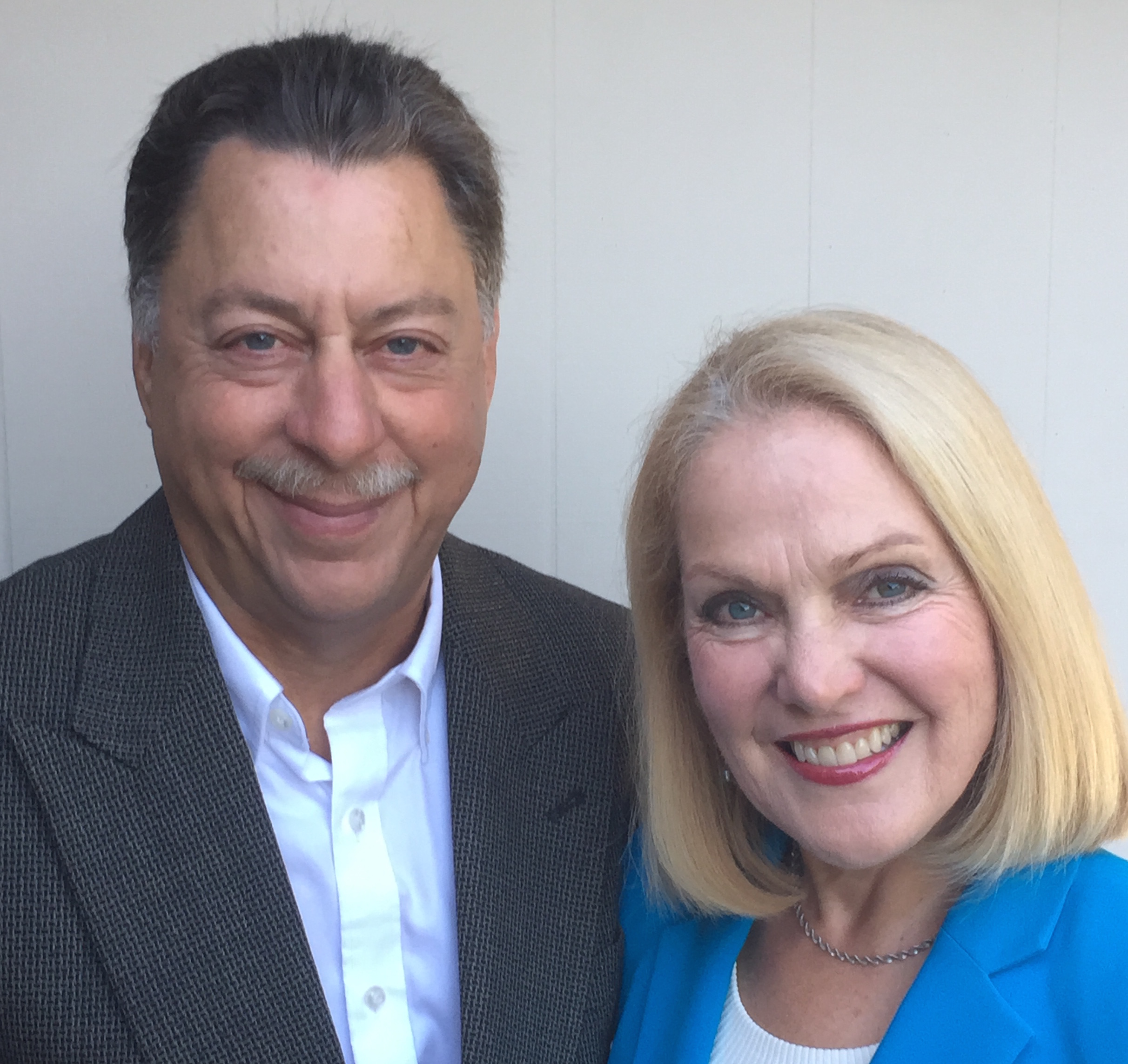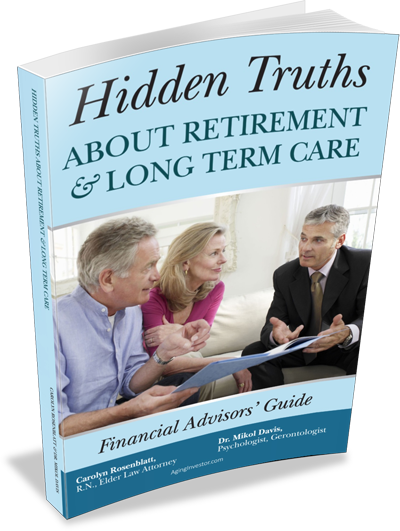
Oct 20, 2022 | aging, aging in place, cost of aging, cost of long term care, finances for elders, financial advisors
Carolyn L. Rosenblatt, RN, Attorney, AgingParents.com
Every year since 2004, private long term care insurer, Genworth has conducted a national survey to determine the average costs of care at home, and in facilities. The data is broken down by state, with the median price listed. The bottom line: the cost of care is rising significantly in all the four general areas Genworth studied. It is also rising in the areas it did not study. Inflation is affecting how much it costs elders and families to keep them at home or in any living situation. The Genworth study includes home care, adult day health, assisted living and nursing homes. There is a lot more to consider than what the Genworth study shows. Long-term care is not limited to the things this insurer pays for when you buy a product from them.
The median monthly costs in the U.S. for two of the services studies are outlined in the 2021 report from Genworth:
Homemaker services (help with cooking, cleaning, transportation, shopping, etc.) $4957
Home Health Aide (personal care: eating, bathing, dressing, walking, bathroom, etc.) $5148
In a book we wrote for financial planners, Hidden Truths About Retirement & Long Term Care (AgingInvestor.com, 2017), we detail how about 70% of us are going to need some kind of long term care in our lives. And we discuss how most of us live in The Great American Fantasy that it won’t happen to us, that we will be fine and die quietly in our sleep at age 100 in full control of our faculties. In the book, we urge financial advisors to help clients get out of fantasy and into the reality that dollars need to be set aside to pay for what Medicare does not cover; so called “custodial care” that is not medical in nature. That includes things like home care workers, home modification to accommodate disabilities, assisted living and other things many people eventually need. We discuss the advantages and disadvantages of all the choices.
Here are actual costs we learned about from clients in two real cases.
Four Years of Home Care
One of them, described in our book from 2017, was about a man who lived to be 95 and never wanted to be in a facility. His wife hired caregivers to keep him at home. Long term care insurance defrayed some of the cost but most came out of pocket. The bill for the 24/7 care he received over four years of increasing dependency: $2M. There was nothing unusual about his needs. He just got more frail and had more care issues over time. That’s typical of how some of us are going to age. At the end, he had four caregivers in shifts, a specially fitted van with special wheelchair, a home stair chair, a lift to get him into the bath, numerous other kinds of devices to help and huge increases in the cost of maintaining the home with all the help. That cost would be significantly higher in today’s dollars.
The Outrageous Cost Of A Difficult Elder’s Care
In another, current case we work with at AgingParents.com, there is an elder with unusual needs. The family has a very difficult mother with dementia. She is calm until certain personal care must be given. Her mental state is confusion. She hallucinates and thinks she is being attacked when the family member or paid caregiver attempts to clean or bathe her. She gets very combative, with kicking, biting and punching those next to her. She calms down after the personal care but it takes two people to keep her from hurting anyone. She is astonishingly strong for a woman in her 80s. Her physical assaults happen multiple times a day when she needs cleanup. The family will not put her into a care home. No home would accept her this way. Rather, they would medicate her into a stupor so she would be more manageable. The family won’t have that. Her lighter medication at home allows her to be engaged with those around her in a good way. All except at those time of the close personal care.
This family is paying $50,000 a month for home care workers from two different agencies to help them. They can’t do it alone. They can’t manage with just one caregiver at a time. It takes two at a time to do the job. The cost is draining their assets and there is no end in sight. As this keeps up, the family will be spending $600,000 in 2022 to care for their mother.
Assuredly, not every elder is as difficult as the combative and confused mother in this case. But some elders do become very hard to care for. If one has strong feelings about not over-medicating a loved one, the choices can get very expensive.
It can take a good strategy to manage the care of an elder at home. It is not as simple as just buying long-term care insurance when the elder still can qualify for it. It may take working with a competent financial planner who understands that the limited things this insurance pays for do not fully protect anyone from out-of-pocket costs. Many additional things may be needed to maintain an aging loved one at home, where most people want to be. Financial planners tend to promote having income to pay for “the lifestyle to which you are accustomed”. No one is accustomed to a lifestyle of needing 24/7 care at home. However that is a reality anyone needs to discuss with a competent financial advisor, as it can happen to any of us.
Overall, this is a wake-up call for anyone who has not thought through how to pay for long term care. If it is your own aging loved one, you can’t ever be sure that they won’t need assistance from a paid source in the future. If it is yourself, at or near retirement age, be wise about how you look at the need 70% of us may have as we get older. Long-term care can be simple for some. It can be a huge, heavy burden for others. The wise retiree will consider the risks of getting old, living long and the likely need for paid help at some time in their future.

Dec 30, 2020 | aging, aging in place, aging investor, cost of aging, cost of long term care, elder investor, elderly, finances for elders, financial advisors, handling money for seniors, investor, long term care, medicare, retirement planning, senior investor, seniors finances
In retirement planning discussions, we see this statement financial professionals often publish for their clients:
“The average lifetime out of pocket costs for healthcare for a 65 year old couple retiring today is $285,000.”
Why should you never say this? It’s misleading at best and at worst, it’s false. From my own research as to where the number came from, I found it in government sources calculating Medicare deductibles and supplemental insurance payments, and co-pays Medicare does not cover. Generally, the out of pocket calculation refers to non-covered “medical” costs. But when that term gets diluted to mean “healthcare” it is far too broad and it simply ignores the reality that long term care is indeed healthcare. Medicare does not cover that at all, except for limited stays in skilled nursing homes following hospitalizations. It is noteworthy that when the Federal government uses data to calculate what out of pocket medical costs will be, the subject of long term care is entirely omitted.
The “average” lifetime cost of long-term care for two people in this country is far greater than $285,000. According to research by long term care insurance provider, Genworth, seven in ten people will need long term care at some point in their lives.
The comprehensive Genworth cost of care study, done annually, was published for 2020. Consider that at some point, with longevity being as it is, an older person with multiple medical conditions may need 24/7 care. Almost everyone will tell the advisor that he or she wants to stay at home and age in place. What will that cost at home in any of the most expensive states? In California, for example, the median cost of in-home care with a non-licensed caregiver full time, 27/7 is $252,000 per year! This is not medical care, in the sense that no skilled nursing is part of it, no doctor’s prescription is involved, and the agencies that supply unlicensed home care workers can charge whatever the market will bear.
A truthful financial professional will never mislead aging clients, or those planning for retirement by telling them that all they have to worry about for their future out of pocket healthcare costs is $285,000. Prudent financial advisors will themselves look annually at the Genworth study and help clients calculate the costs of long-term care, which every person should know about.
Costs of care, whether at home, in an adult day health center, in assisted living or in a skilled nursing facility vary widely from state to state. Looking at national median costs can be of little benefit to anyone doing retirement planning. Instead, using data from the Genworth study, one can look state by state for the real, most applicable numbers derived from where your client lives or plans to retire.
From my perspective, financial advisors are not educated to fully understand the difference between government provided statistics about out of pocket, non-Medicare covered medical costs and what we mean by long term care. They are quite different terms. It is distressing to me, with substantial experience in nursing, to see the fallacy of statements published by financial professionals about what retirement planning should include. Clients will be shocked to find that their own experience with having to pay for long term care out of pocket is not what their own advisor told them years before.
If you are in the retirement planning business and you want to serve your clients well, bear in mind that the data telling us that seven in ten people will need long term care at some point is likely true. Don’t fool yourself into thinking that retirement planning is just fine if a couple puts away enough to generate $285,000 for out of pocket medical costs. They also need to plan for how to pay for long term care, which they are statistically likely to need. That cost can destroy the most carefully laid plans for retirement income.
As a real-life example, take a client of ours, “George” at AgingParents.com, where we offer advice and guidance to families with aging loved ones. The advice encompasses legal, financial and healthcare issues as well as diminished capacity issues. George is 98 years of age and still sharp, though with some memory loss problems. He was wealthy at one point, after two successful careers. He owns his own home and wants to stay there for the rest of his days. His physical health is fragile and he now needs 24/7 help. He hired a good agency to provide in-home care. He spends in excess of $300,000 a year for caregiving alone, not counting the cost of everything else involved in home ownership, food, recreation, and out of pocket medical costs. Those medical costs involve dental surgery and equipment he needs at home. He has less than $400,000 left in savings. What if he lives another two to four years?
As you can see from this example, George is not a rare case. Many people do live into their 90s and beyond. Many start out with financial security, only to see assets rapidly depleted as the cost of care escalates to heights no one wanted to think about in retirement planning.
The Takeway
If you pride yourself in doing great retirement planning with clients, get real. Sit down with the data and find out what your clients might expect to need if they live long and require help at home or elsewhere. Tell the truth about it. If they need long-term care insurance to feel secure, talk about it. If they have sufficient assets to make it to 100 or so with full time care, they don’t need to get long term care insurance but they will need to have access to sufficient cash to cover the actual, not fantasy, costs. Above all, be clear in your own mind about what “out of pocket medical costs” means as compared with long term care costs. You are the key to these honest calculations. You can be the hero of the retirement planning story when you present an honest picture to every client you have.
By Carolyn L. Rosenblatt, RN, Attorney, AgingInvestor.com
About Carolyn Rosenblatt and Dr. Mikol Davis
Carolyn Rosenblatt and Dr. Mikol Davis are co-authors of The Family Guide to Aging Parents (www.agingparents.com) and Succeed With Senior Clients: A Financial Advisors Guide To Best Practices and Hidden Truths About Retirement and Long Term Care. Rosenblatt, a registered nurse and elder law attorney, has more than 45 years combined experience in her professions. She has been quoted in the New York Times and, Wall Street Journal, Money magazine and many other publications. Davis, a clinical psychologist and gerontologist, has more than 44 years experience as a mental health provider. In addition to serving his patients, Davis creates online courses and products to assist professionals and the public with understanding aging issues. Rosenblatt and Davis have been married for 36 years.

Dec 8, 2020 | aging, aging in place, cost of aging, cost of long term care, financial advisors, handling money for aging parents, long term care, retirement, retirement planning
Few things are more stressful than family disagreements, especially related to helping an aging family member. You’re invited to a VIP Virtual Event: How to Resolve Family Conflicts, Care, Control and Money Approaches from Legal, Psychological and Compassionate Perspectives
Wednesday, December 9 I 4:00 – 5:00 pm Pacific Standard Time
Featuring special guest speakers Carolyn L. Rosenblatt, RN, Attorney and Dr. Mikol Davis, Psychologist of AgingParents.com
RSVP david@eleganceatnovato.com (Link will be provided with RSVP)
The first 20 attendees to RSVP will receive “The Family Guide to Aging Parents: Answers to Your Legal, Financial and Healthcare Questions,” 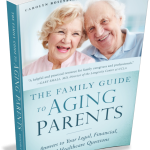 by Carolyn L. Rosenblatt.
by Carolyn L. Rosenblatt.
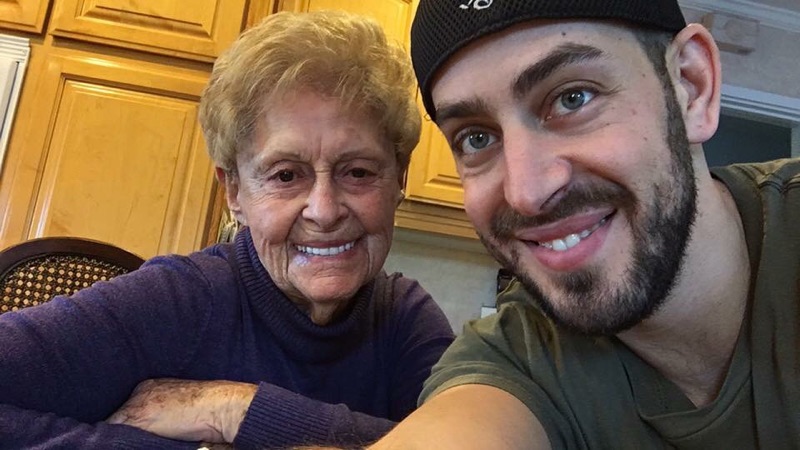
Jul 11, 2019 | aging, aging in place, cost of aging, diminished cognition, elderly, health, resources for senior, resources for seniors, retirement planning
Does The Advisor Have A Role With Aging Clients Who Become Unsafe Living Alone?
Carolyn Rosenblatt, RN, Elder law attorney, AgingParents.com
You’ve known the client for many years. As time passes and she lives longer than she thought she would, you see her inevitable decline. She loses her husband, on whom she depended. She doesn’t want to move to assisted living or anywhere, even if you think it would be best for her. Her vision is dimming and her hearing isn’t good either. She has refused all help even when you reassured her she could easily afford whatever she needs.
Is there anything you can do? You care about the client but you’re used to just managing the money, and it isn’t clear that you are obligated to go beyond that. But you know that your client just isn’t safe alone anymore.
In these situations, the most competent advisors and wealth managers can feel conflicted about their roles. They have over the years come to know the client well and there is a sense of wanting the client to be safe. At the same time, maybe it’s not an advisor’s problem. What about the family? What if there is no family?
The first thing every advisor should do is what the regulators make optional for you: “try” to get a trusted third party contact. From our vantage point at AgingInvestor.com and AgingParents.com, we think it’s ridiculous to consider it an option rather than a requirement to get a trusted contact on file. The advisor can be more trusted than family in some cases and has a unique vantage point. YOU are the one who may be first to see your client’s decline and need for greater safety in the client’s living situation. You need to have someone to call. If it’s family and they are willing to step in, good. If there is no family, the client must be advised to hire a licensed person who is capable of overseeing their care if needed and to assist with day-to-day finances. The term “fiduciary” has a different meaning in the context of your industry, but outside it, a fiduciary can be a person whom the state licenses to manage money for someone who is not able to do it alone. They serve in the capacity similar to that of a conservator, guardian or power of attorney appointee, but the aging person still maintains some control as long as he or she remains cognitively intact. For those with no family a licensed fiduciary can solve the question: who can the client count on to help?
Even when there is family the aging client can still resist moving to a senior’s apartment in a community rather than struggling on living alone. It happened in our own family. It took two years for Dr. Davis’ mother, Alice to make up her mind to give up living alone in a house. To see a short video, Alice’s perspective of her decision. Click HERE.
At age 90, she had vision and hearing problems, arthritis, leg pain, unstable blood pressure, kidney and bladder issues and she took 14 pills a day. That by itself was not enough to get her to agree to move. She ultimately reached the decision because she got tired of the daily difficulty she had trying to maintain independence.
Even with your efforts to persuade a client that he or she ought to consider some new choice like assisted living, remember that a person who is competent can’t be forced to move anywhere. Logic has nothing to do with the fear of losing one’s independence. But keep trying and do work with the client’s family on a joint plan to help your client get to a safe decision.
What Action Can You Take?
Can you tell your client’s family about your observations? We see no ethical dilemma at all here. This is not about financial matters necessarily though it can be. The cost of moving and paying for care is a factor. But no one says you have to talk about what’s in your client’s portfolio. To be in the best position in anticipation of a client who is declining with age, get your client to identify any family or friends who could be called upon “in case of emergency”. Get more than one trusted contact. If you have a few people on the list identified by your client, call a phone meeting and discuss strategy. Gentle persuasion can work over time as it did with 92 year old Alice, who finally decided to move into a senior’s apartment. She was mighty stubborn but it did work out in the end, absent disaster. We were fortunate.
The takeaways from AgingInvestor.com:
Anticipate that long-lived clients may become unsafe living alone. Most people over age 80 need some kind of help in their lives.
You as the trusted advisor can be ready for age-related decline in your clients by having several trusted contacts in your client’s file whom you know and can call upon when safety is an issue.
If you become aware that your client is losing independence and should not be living alone, call a phone meeting with the trusted contacts to develop a strategy for working together to help your client make a good decision about moving or bringing help in.
Expand your role of merely managing the money and use your position of trust to help your client and the family keep the client physically safer.
If this all seems to be an awkward and uncomfortable thing to address, get a consultation from experts on aging at AgingInvestor.com. Our nurse-lawyer, geriatric psychologist team offers you expertise in how to approach a problem with an unsafe client and even what words to use to help them with important safety decisions.

Jan 30, 2019 | aging, aging in place, cost of aging, cost of long term care, declining health, diminished cognition, elderly, finances for elders, financial advisors, financial capacity, handling money for seniors, long term care, nursing home
Most advisors who even ask this question of their retirement-aged clients never spend time on it. About 90% of those asked say they want to remain in their own homes as long as possible. That sounds fine. Until one faces physical decline, cognitive impairment or both. The advisor providing competent guidance about financing aging at home had better know the facts.
None of us like to think about losing physical ability or needing help. We abhor the thought of losing our total independence. In our view at AgingInvestor.com, the only advice clients are getting is about the long term picture is whether or not to purchase long term care insurance. Since most people don’t do that, the actual costs of living at home can boggle the mind. It’s the best advisor’s obligation to educate your client about the risks of the plan to age in place, just as it is your obligation to educate them about balancing their portfolios. You are giving the client added value if you take the time to talk them through the risks and dollars they may need to have available.
Here are some briefly stated facts from a real case in which an 89 year old wanted to age in place and his wife promised he would never have to leave home.
At the outset of his declining health, he had about $3M in invested assets. His portfolio was healthy and balanced for his age, according to conventional wisdom. He began to lose his ability to walk due to multiple medical problems. His wife hired home helpers, three days a week at first. As his conditions progressed he needed more and more help. He had to have a wheelchair, and a special van. A stair chair was installed in their two-story home. By the time he reached age 95, he was spending over $150,000 a year on care and assistance around the clock. In the space of time during which he was steadily losing independence until he passed away at 95, his assets were depleted to the tune of $2M. He lived in a higher end market for the needed help but the reality is that in any market, the kind of care he needed would be very expensive.
For him, aging in place was more costly than a skilled nursing facility would have been. Home modifications, private caregivers, (none of whom were licensed nurses), equipment, medications, adaptive devices, etc. drained his resources by 2/3. And not everyone has as much invested as he had to even start the journey. His wife had her own assets and she paid the cost of household maintenance, taxes, food, and utilities with her funds. Had she relied on him for those things too, there would likely have been little left at the end of his life.
It is not all doom and gloom however. Many clients live rather well in their last years without all the care this gentleman needed. Some get by with family caregiving help, and some have fewer medical conditions. But if you are going to competently help your clients plan for longevity, it’s essential to understand the real out of pocket costs of aging in place or anywhere else outside the home. If you want to add value to your services to older clients, know what they need to know to properly anticipate what can happen with living into one’s 90s and beyond.
Learn all the actual costs of care for every aging client option in our book, Hidden Truths About Retirement & Long Term Care. Be well prepared to walk your client through the scenarios they could face in their futures. You distinguish yourself from other advisors when you sharpen your knowledge in planning for longevity.
By Carolyn Rosenblatt, RN, Attorney, AgingInvestor.com

Jan 28, 2019 | aging, aging in place, aging investor, cost of aging, cost of long term care, custodial care, declining health, diminished cognition, elder investor, elderly, finances for elders, financial advisors, financial capacity, financial elder abuse, financial judgement, handling money for seniors, health, long term care, nursing home, resources for seniors, seniors finances
Your clients are getting ready for retirement. You’ve done the calculations, balanced the portfolio and advised them of what income to expect. You’ve discussed how much spending is ok. You used your program and your analysis was thorough. You’ve done your job, right?
Not exactly. There is probably no algorithm nor program that will calculate your client’s individual profile of health risks that will likely lead to the expense of long term care. That can be a whopper. Maybe you’ve suggested long term care insurance. Most people don’t choose to buy it. For those who do, the benefits are limited and the “elimination period” (deductible) is thousands of dollars. There go your careful calculations. At least 90% of folks don’t have that coverage. Now what?
But how can you predict what’s going to happen to anyone’s health in retirement, you ask. You can’t be precise, but you surely can make some rational observations and give advice accordingly. Those observations consist of two parts: what you can see with your own eyes and what you can glean by asking a few basic questions. If you think asking any client about their health conditions is too nosy or not your job, consider that if the client needs long term care and runs out of money because of it, they’re not going to think much of you. And the cost can wipe out their security.
Asking about health issues is not nosy at all. Rather, it’s what any smart advisor planning for longevity must do. Let’s not keep pretending that everyone stays the same physically and mentally from the start of retirement to end of life. Our bodies go through wear and tear and things break down. Cognitive decline affects at least a third of people who reach the age of 85. The risk of Alzheimer’s disease keeps climbing after that. Now, what was that life expectancy you were using in your calculation? Was it age 99?
Let’s start with what you can see in your client with your own eyes. (If they’re not in front of you, perhaps Skype is an option). Is your client obese, as about 40% of the U.S. population is? This leads to heart disease, stroke, and diabetes, among other diseases and conditions. The medical care people receive in many cases will save them from dying but they then live with disabilities. And yes, they will be very likely to need expensive long term care. Neither health insurance nor Medicare will cover long term care. Such help as a part time caregiver at home is how most folks start out with long term care. Your client pays out of pocket most of the time. Did you calculate how much it costs as well as how long they will likely need it? If they have multiple medical conditions, and have started long term care, they’ll probably continue to need some form of it for all their remaining years.
Find out what you may not know from simply observing your client’s appearance by asking questions. You can make your own list or get a health care provider to help you with a few targeted questions. You will need to educate your client as to the reason why you need this information. It’s to help them plan for how much to save in their retirement years.
Here are some examples of basic questions that can help you predict the need for possible long term care:
- How’s your health these days? Has a doctor told you that you have any long term conditions?
- Are you taking medications? What are they for?
- Do you smoke?
- Are you concerned at all about any health issues you have at this time?
Do you recall your parents’ ages when they died?Your aging clients will not be eager to talk about the potential need for long term care. When you told them about what to expect for “out of pocket medical costs in retirement”, you did not give them a figure that included long term care. Long term care is not “medical” according to Medicare. Rather, it is called “custodial care”. The client probably will not bring it up, so you must do this.
When you have done your observations and gotten answers to your health-risk related questions at least there is a place to start a meaningful conversation. You can give them figures as to the cost of typical kinds of care, such as a non-medical home care worker. We at AgingInvestor.com recommend starting your projections at age 80 as to when a person might need physical help. Many of us know someone who did require help with at least some part of his or her life at that age. Then you can talk about how any condition your client identifies for you, such as high blood pressure, diabetes, etc. as shortening normal life expectancy and increasing the risk for needing help. If your client already has difficulty with some normal daily activity such as walking or bathing, they are definitely at high risk for needing paid help sooner than a person without these problems.
Clients may be completely unaware of such things as the hourly cost of a home care worker, what assisted living costs each month and what home modifications cost if they are able to remain in their own home. You can find a thorough discussion of these and many other parts of long term care in our book, Hidden Truths About Retirement & Long Term Care, written specifically for financial advisors like you.
Every conscientious advisor needs to wake up to the reality that your retirement income calculator omits the reality check of health problems. We’re not talking about nursing homes, but every other kind of care and help most people will need as they age. If you do want to help clients who are reaching retirement age to plan realistically, include the health risks you can see or learn about by asking.
By Carolyn L. Rosenblatt, RN, Elder law attorney, AgingInvestor.com
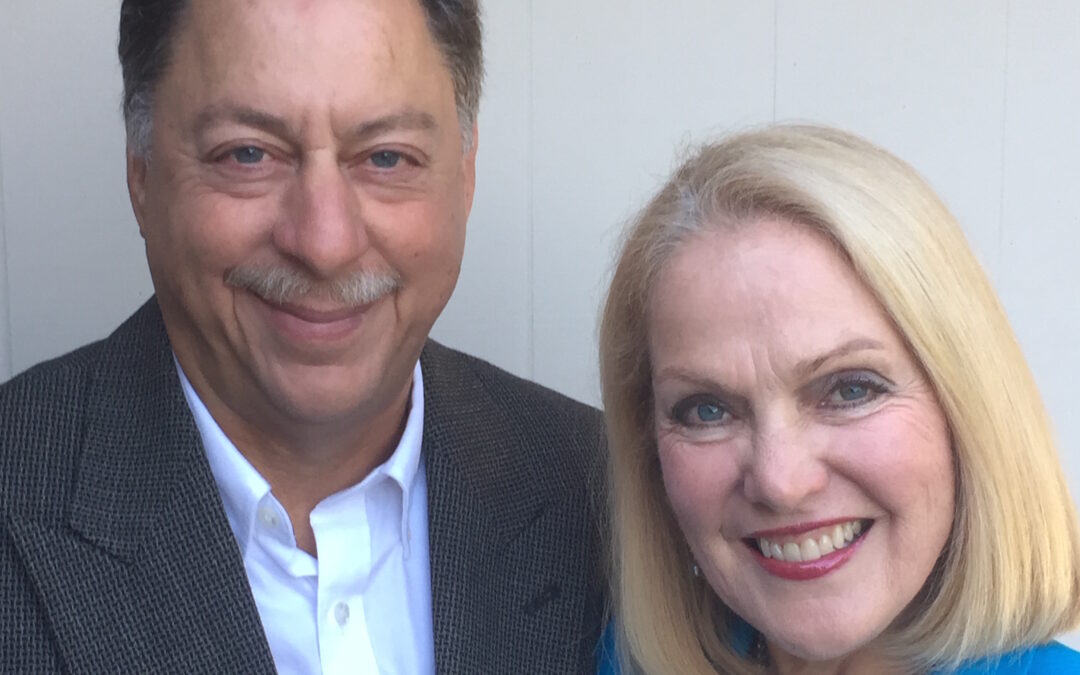
Jan 24, 2019 | aging, aging in place, declining health, diminished cognition, elderly, financial advisors, health, long term care, resources for seniors

Jan 18, 2019 | aging, aging in place, aging investor, cost of aging, declining health, elderly, finances for elders, financial advisors, handling money for aging parents, handling money for seniors, health, long term care, resources for seniors, retirement planning, seniors finances
Most advisors who even ask this question of their
retirement-aged clients never spend time on it. About 90% of those asked say
they want to remain in their own homes as long as possible. That sounds fine. Until one faces physical
decline, cognitive impairment or both. The advisor providing competent guidance
about financing aging at home had better know the facts.
None of us like to think about losing physical ability or needing help. We abhor the thought of losing our total independence. In our view at AgingInvestor.com, the only advice clients are getting is about the long term picture is whether or not to purchase long term care insurance. Since most people don’t do that, the actual costs of living at home can boggle the mind. It’s the best advisor’s obligation to educate your client about the risks of the plan to age in place, just as it is your obligation to educate them about balancing their portfolios. You are giving the client added value if you take the time to talk them through the risks and dollars they may need to have available.
Here are some briefly stated facts from a real case in which
an 89 year old wanted to age in place and his wife promised he would never have
to leave home.
At the outset of his declining health, he had about $3M in
invested assets. His portfolio was healthy and balanced for his age, according
to conventional wisdom. He began to lose his ability to walk due to multiple
medical problems. His wife hired home helpers, three days a week at first. As
his conditions progressed he needed more and more help. He had to have a wheelchair, and a special
van. A stair chair was installed in their two-story home. By the time he
reached age 95, he was spending over $150,000 a year on care and assistance
around the clock. In the space of time during which he was steadily losing
independence until he passed away at 95, his assets were depleted to the tune
of $2M. He lived in a higher end market for the needed help but the reality is
that in any market, the kind of care he needed would be very expensive.
For him, aging in place was more costly than a skilled
nursing facility would have been. Home modifications, private caregivers, (none
of whom were licensed nurses), equipment, medications, adaptive devices, etc.
drained his resources by 2/3. And not everyone has as much invested as he had
to even start the journey. His wife had her own assets and she paid the cost of
household maintenance, taxes, food, and utilities with her funds. Had she
relied on him for those things too, there would likely have been little left at
the end of his life.
It is not all doom and gloom however. Many clients live rather well in their last years without all the care this gentleman needed. Some get by with family caregiving help, and some have fewer medical conditions. But if you are going to competently help your clients plan for longevity, it’s essential to understand the real out of pocket costs of aging in place or anywhere else outside the home. If you want to add value to your services to older clients, know what they need to know to properly anticipate what can happen with living into one’s 90s and beyond. Learn all the actual costs of care for every aging client option in our book, Hidden Truths About Retirement & Long Term Care. Be well prepared to walk your client through the scenarios they could face in their futures. You distinguish yourself from other advisors when you sharpen your knowledge in planning for longevity.
By Carolyn Rosenblatt, RN, Attorney, AgingInvestor.com




 by Carolyn L. Rosenblatt.
by Carolyn L. Rosenblatt.



